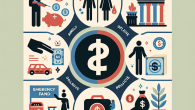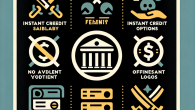
Personal Finance Red Flags I’ve Learned to Spot (And How You Can Too)
How to Start Investing with Just $100 (Yes, Really!)
Let’s be honest: when we think of “investing,” most of us immediately picture slick New York City professionals tossing around millions over catered lunches. Been there—I used to think investing was only for the ultra-rich, too. But here’s the beautiful, slightly sassy truth: you don’t need a Wall Street salary to get started. In fact, you can start investing with just $100. Yep. One. Hundred. Dollars.
I’m Rachel Simmons—former over-spender turned Personal Investing & Financial Independence coach. Grab your oat milk latte, and let’s turn that crisp Benjamin into your first baby steps toward financial freedom.
Why Starting Small Actually Works
The biggest myth around investing is that you need to be rich to begin. False. The real obstacle? Mindset. We’re sold this idea that investing is complicated, risky, and exclusive. But in reality, starting small is how you build wealth gradually without stress.
Think of investing like working out. No one expects six-pack abs on day one (although wouldn’t that be nice?). The gains come from consistency, not perfection.
Benefits of Starting with $100
- Low-risk learning: You can test strategies without losing sleep.
- Establishes the habit: Investing becomes a normal, monthly ritual—like brushing your teeth, but more lucrative.
- Time is your BFF: With compound interest, starting early matters way more than starting big.
Step 1: Define Where You’re Headed
Before tossing your money into the nearest digital wallet or meme stock, it’s time to get cozy with your goals. Ask yourself:
- Am I investing for retirement?
- Do I want to build wealth to travel, buy a home, or retire early?
- How comfortable am I with risk?
This isn’t just a journaling exercise (although, grab your Moleskine if it helps). Knowing your goals helps you choose the right investments and build confidence as your strategy unfolds.
Step 2: Choose the Right Investment Platform
Okay, time to plant that $100 somewhere it can grow. Here’s where you don’t want complexity—you want simplicity, low fees, and automation. Here are a few starter-friendly options:
Robo-Advisors
These are like having a financial planner—but in app form. You answer a few questions about your goals and risk tolerance, and the platform handles the rest. It even rebalances your portfolio. Some beginner-friendly robo-advisors include:
- Betterment
- Wealthfront
- SoFi Invest
Brokerage Accounts
If you want a little more control and aren’t afraid to get your hands dirty (in a good way), go for a traditional brokerage account. These let you pick ETFs, stocks, bonds—you choose the adventure.
- Fidelity
- Charles Schwab
- Robinhood
Apps That Round-Up
Still feel like $100 is a stretch? Try apps like Acorns, which round up your everyday purchases and invest the spare change. It’s sneaky smart: you’re building wealth without even thinking about it.
Step 3: Select What to Invest In
Remember: investing is a long-term game. We’re not chasing Reddit-fueled trends or trying to double our money overnight. We’re building something meaningful—for you, for your future. With $100, focus on diversity and simplicity.
Exchange-Traded Funds (ETFs)
These are my personal faves. ETFs are like a buffet of stocks, meaning you get lots of variety (and less risk) for a single price. They track market indices like the S&P 500, so your money grows as the market grows.
Fractional Shares
Can’t afford one share of Amazon or Tesla? No drama. Platforms like Robinhood or Fidelity allow you to buy pieces of big-name stocks with as little as $1. It’s sushi-sized sampling for your portfolio.
High-Yield Savings or Bonds (If Cautious)
If you’re super risk-averse or want an intermediary step before full-on investing, a high-yield savings account or savings bonds can help preserve your $100 while still earning better-than-nothing interest.
Step 4: Automate and Chill
Once your investment is set up, automate your contributions. Even if it’s just $25/month. Why?
- Consistency beats intensity. (Shout-out to gym metaphors again.)
- You won’t forget or second-guess yourself each time.
- Over time, these small amounts turn into major wins.
Set it, forget it, and watch your net worth slowly—but surely—rise.
Step 5: Track, Learn, and Repeat
Finance isn’t “one and done.” It’s a relationship. (And like any good relationship, it needs occasional check-ins.) I peek at my portfolio monthly—just a little “how ya doin’?” moment to adjust if necessary.
Keep Growing Your Knowledge
Investing $100 is a great start, but the real secret sauce is financial literacy. Read books, follow trustworthy YouTubers, listen to podcasts, lurk in personal finance forums. Build your knowledge base.
Learn more about us if you’re just starting your finance journey—we’ve got resources and advice tailored for real people with real goals, no corporate jargon in sight.
Before You Go: My Parting Wisdom
Starting small doesn’t mean you’re thinking small. It means you’re being smart, thoughtful, and intentional. Your $100 may feel insignificant today, but with time and strategy, it can snowball into thousands—or even tens of thousands. It’s not a maybe. It’s math.
So don’t wait until you “have more” or “figure it all out.” Perfection is the enemy of progress. Start now. Start simple. Start where you are.
Oh, and if you want to ask a question or share your first investment story with me? Let’s chat here. I’d love to cheer you on!









Leave a Reply